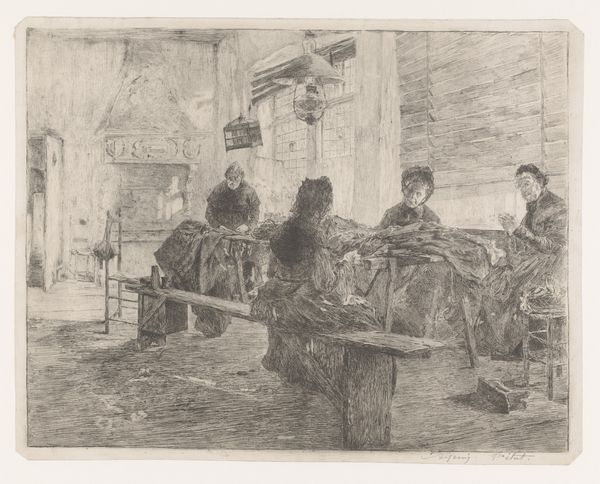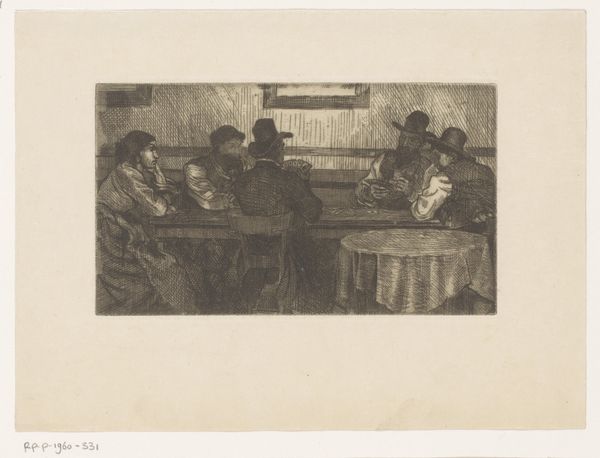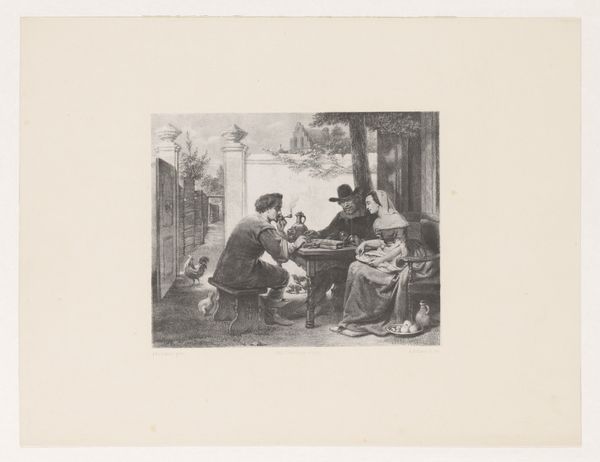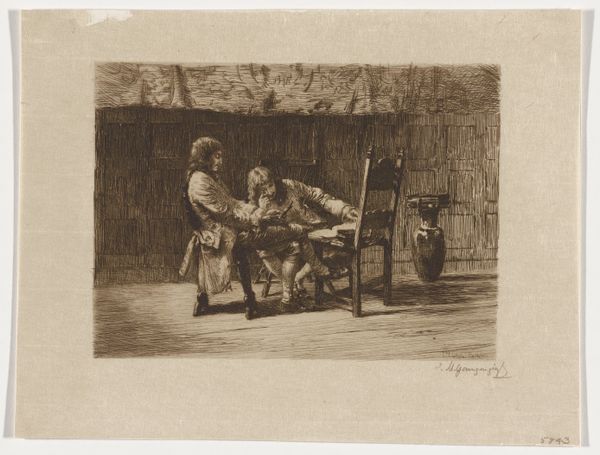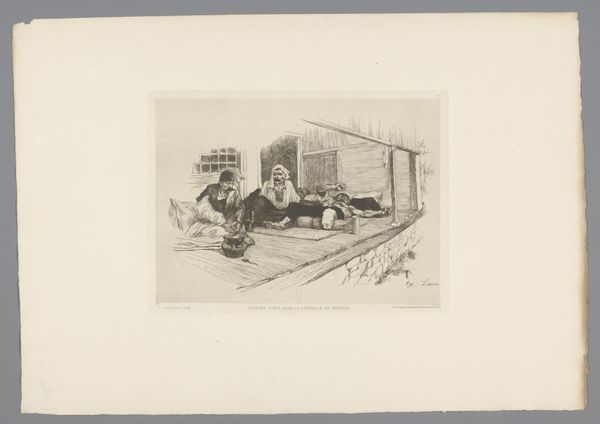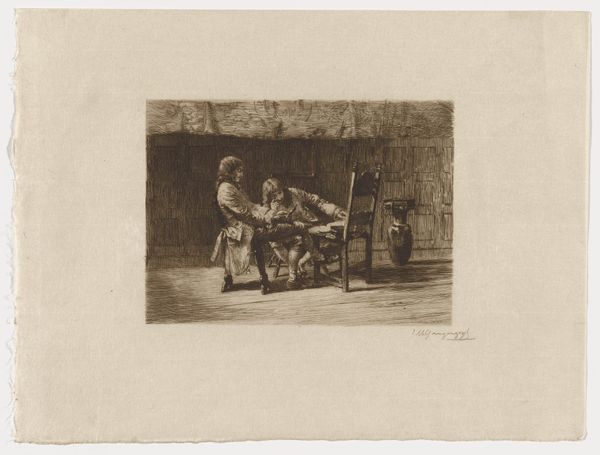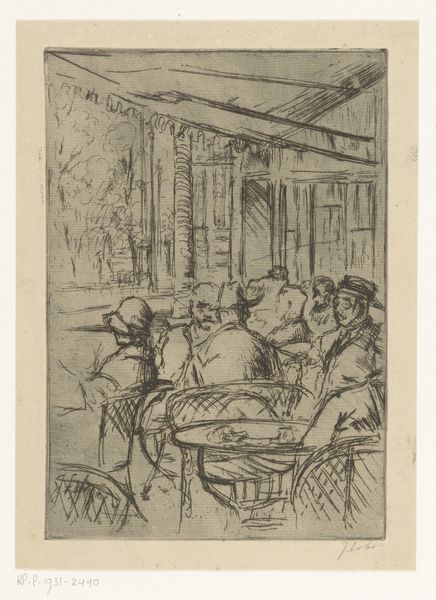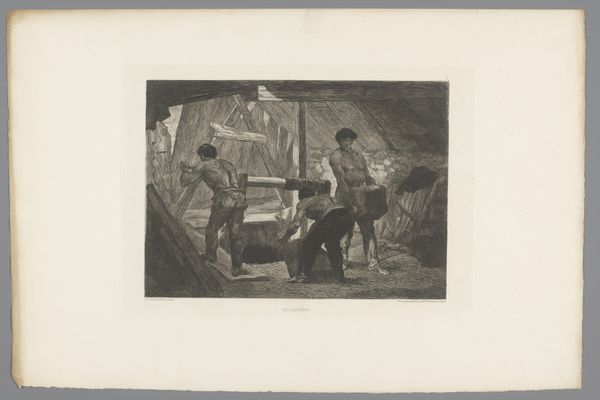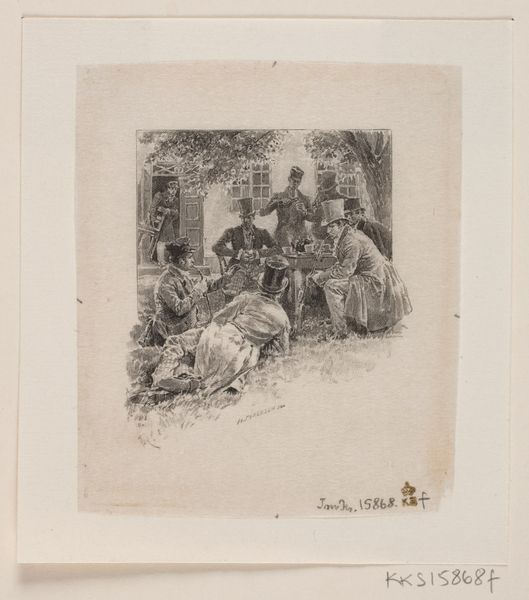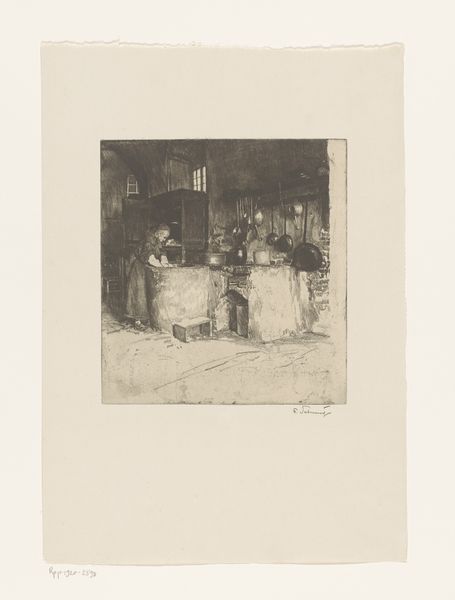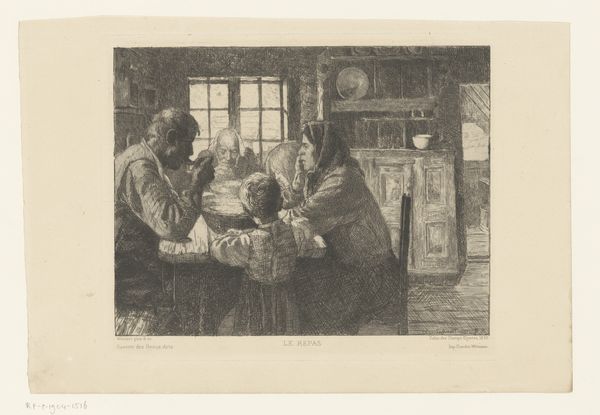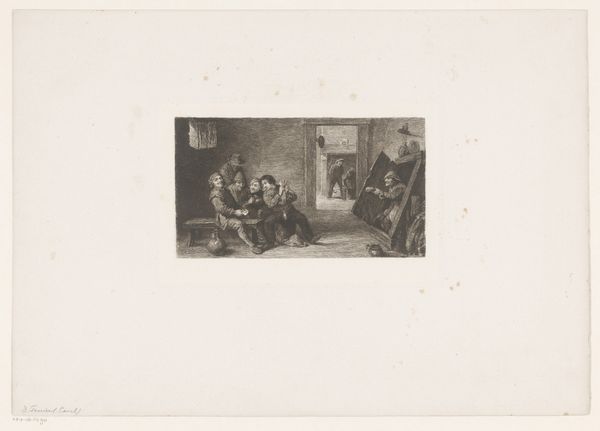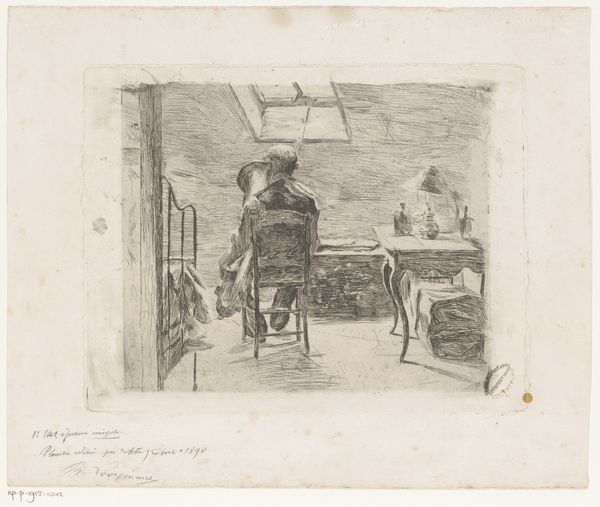
drawing, print, etching, graphite
#
portrait
#
drawing
# print
#
etching
#
landscape
#
figuration
#
graphite
#
genre-painting
#
realism
Dimensions: height 319 mm, width 410 mm
Copyright: Rijks Museum: Open Domain
Editor: This is "Four Women in a Sewing Workshop" by Armand Heins, created sometime between 1866 and 1910, using etching, graphite and other drawing and print media. I’m immediately struck by the image’s muted tones and the women's focused postures. It feels almost like a silent observation of their labor. What stands out to you as you consider this scene? Curator: The etching immediately evokes a sense of shared female experience, but more than that, the weight of generations is palpable here. Notice how the light, though muted, falls upon their hands. These hands, active yet worn, symbolize not just the work they do, but also the domestic sphere, the creation of textiles that comfort and bind families together. What feelings do those symbols evoke in you? Editor: I hadn't thought of their hands in that way. There’s a starkness in the room despite their collective presence; almost a uniformity. Curator: Precisely. Think about the repetitive nature of sewing itself. It's a craft deeply intertwined with history, from mending to making, passing skills down from mother to daughter. The workshop setting, in contrast with say a grand salon, subtly speaks to class, industry, and women's roles within it. The image as a whole becomes less a snapshot, and more a powerful symbol of feminine resilience. Editor: I can definitely see that. The light seems to reinforce the solemnity and fortitude rather than a celebratory sense of achievement. The image holds the weight of labor and history. Curator: Precisely. The arrangement, the poses and subdued light…all echo within our collective memory, revealing layers of symbolism that enrich the narrative beyond the visible forms. What one feels depends very much on one’s history.
Comments
No comments
Be the first to comment and join the conversation on the ultimate creative platform.

